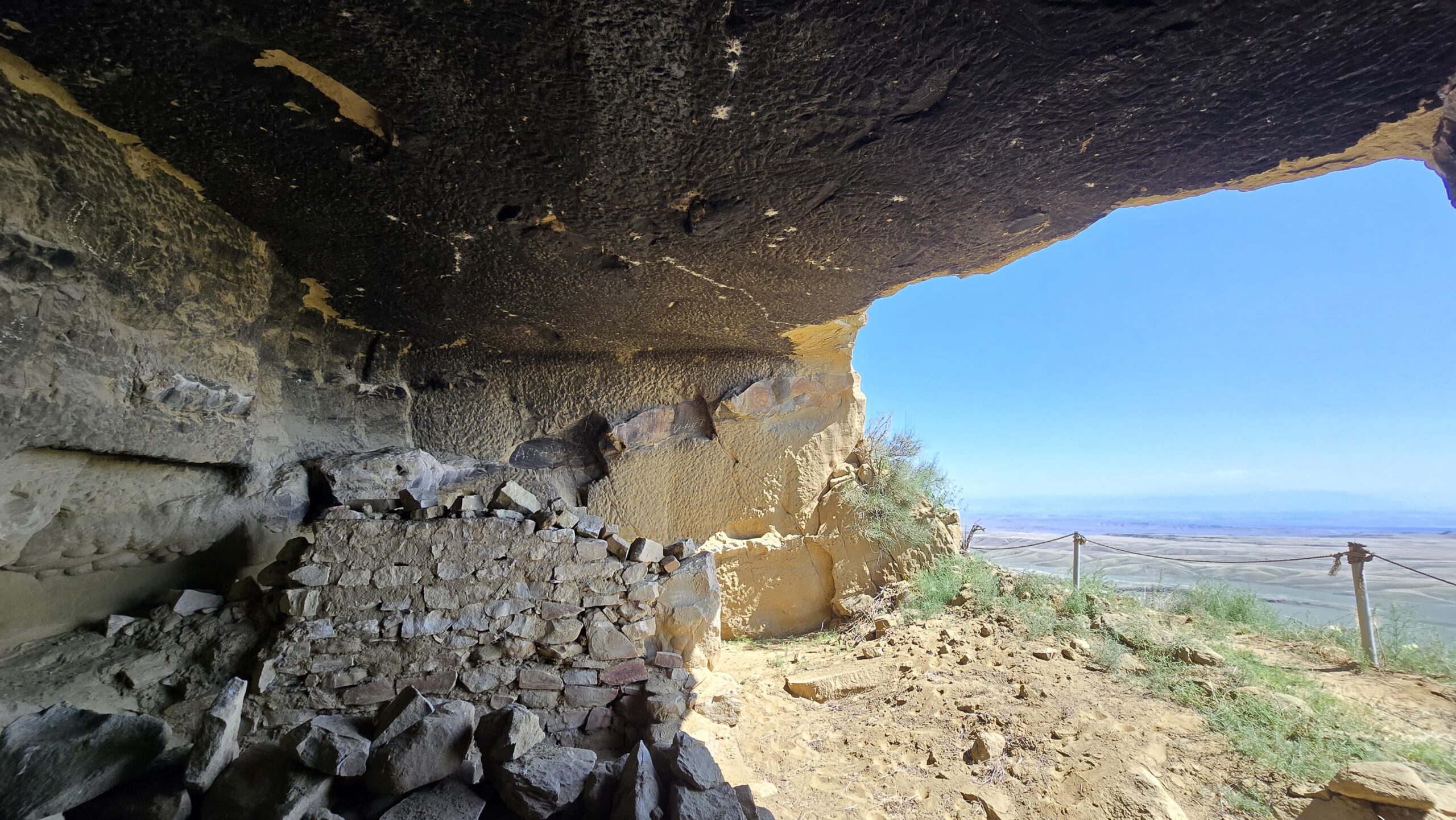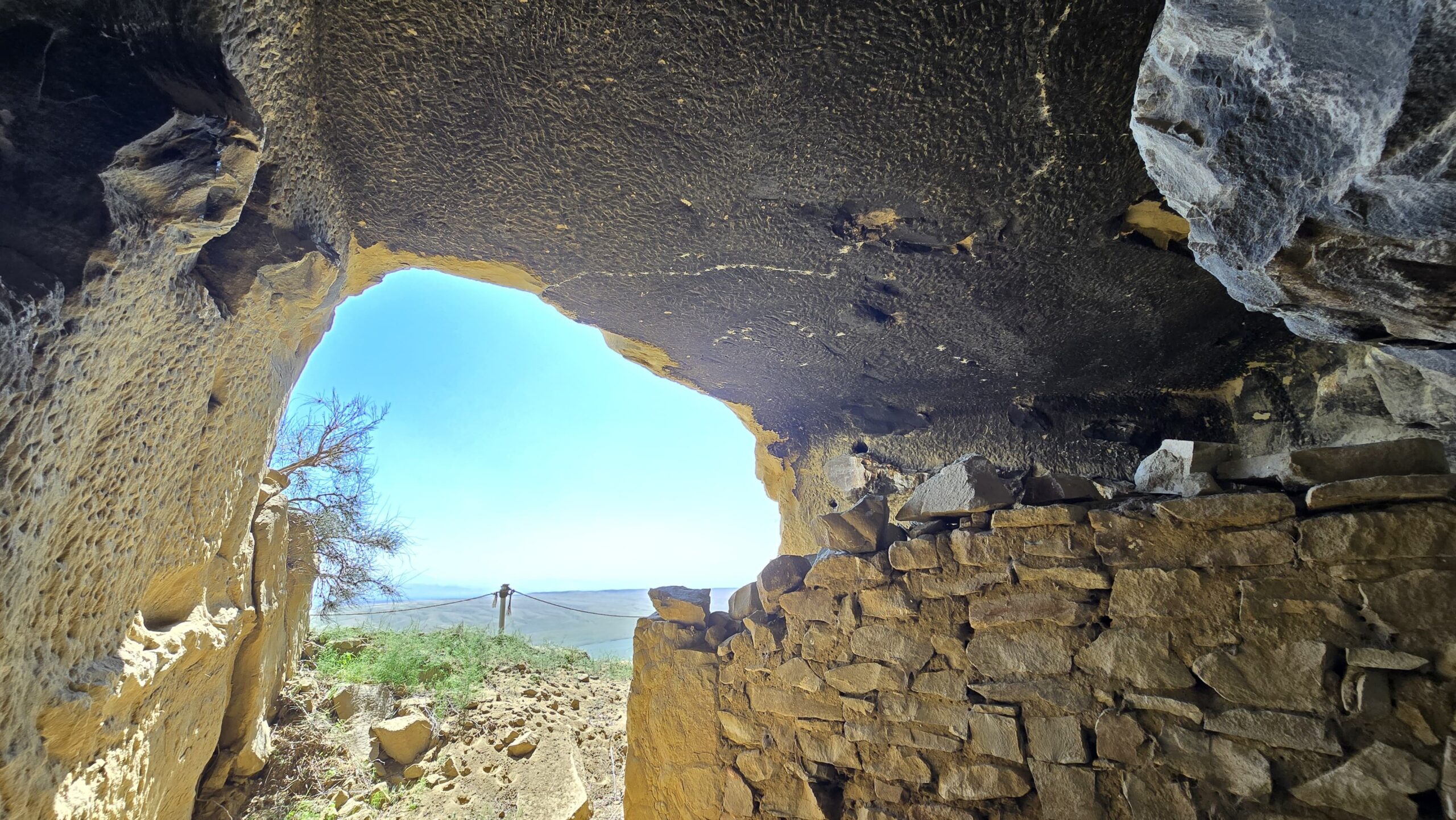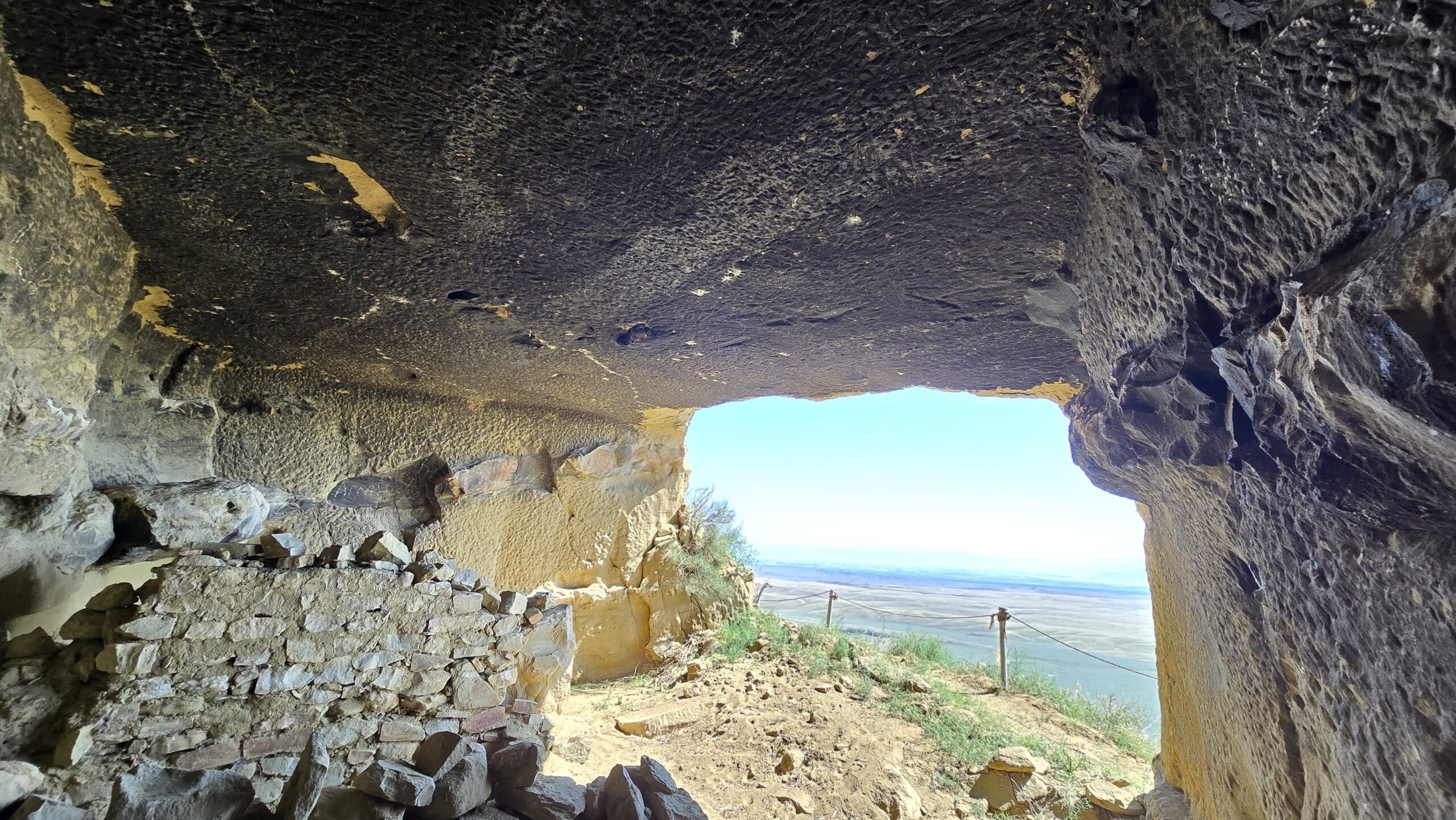CAVE No. 13
Period: Early Middle Ages
Inventory:
Location: Qatardagh Ridge
Keshikchidagh State Historical and Cultural Reserve
Width: 3.60 m
Length: 5.00 m
Height: 1.40 m
Area: 17.6 m²
Cave No. 13, located within the Qatardag Ridge in the territory of the Keshikchidagh State Historical and Cultural Reserve, is classified as an archaeological and architectural monument dating to the Early Middle Ages. Unlike entirely man-made caves, this cave was not fully artificially constructed but was shaped through certain architectural interventions based on a natural cave formation. This feature distinguishes it from the other artificial caves in the complex and highlights its uniqueness from a research perspective. The overall layout of the cave is rectangular in shape, indicating its purposeful use as a functional space. The interior was formed by utilizing natural relief elements, which allowed for efficient use of labor and effective exploitation of the existing geological structure. The cave walls consist of lithified sandstone formations, which are both durable and relatively easy to carve and shape. These geological characteristics created technically favorable conditions for ancient craftsmen during the cave’s interior development. One of the cave’s engineering features of particular interest is the soot-stained ceiling. This blackening is believed to have served the purpose of enhancing the structural stability and durability of the cave, as well as insulating the interior environment. This technical method may have also facilitated air circulation by allowing smoke to accumulate near the ceiling and exit the space, thereby creating more livable conditions. Some scientific perspectives also emphasize the microbiological protective effect of soot.



